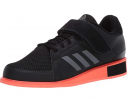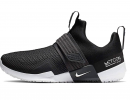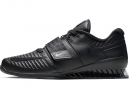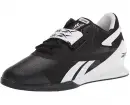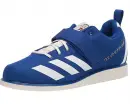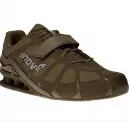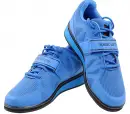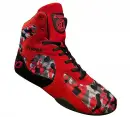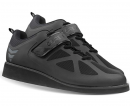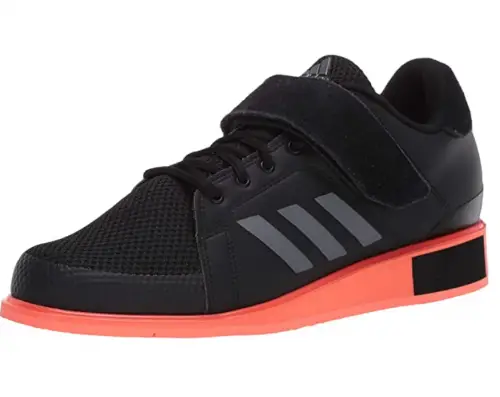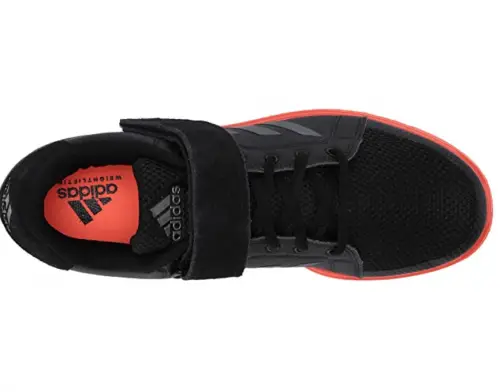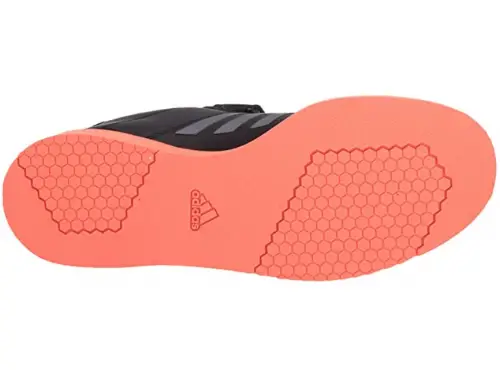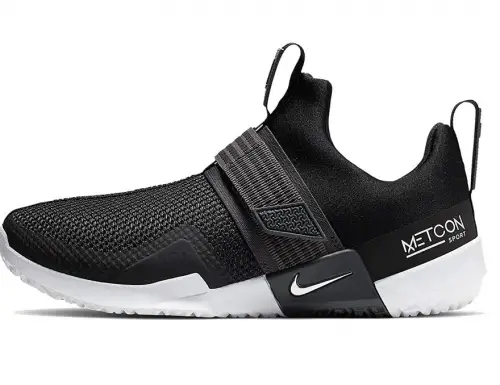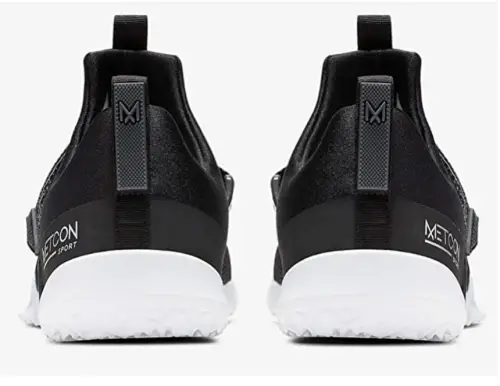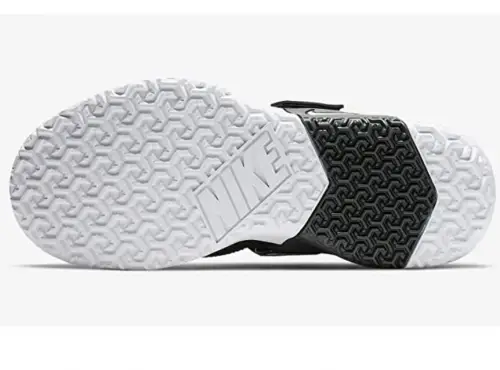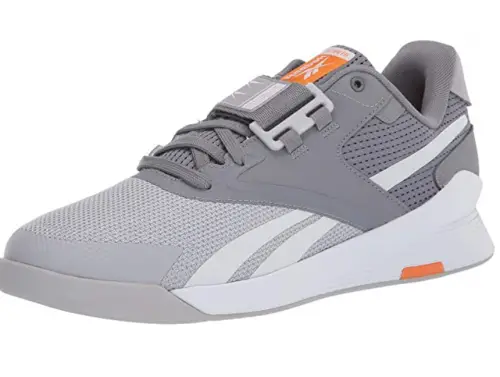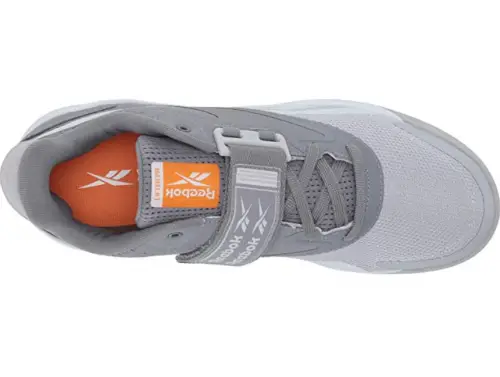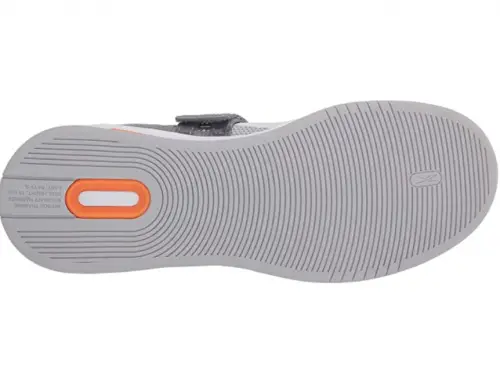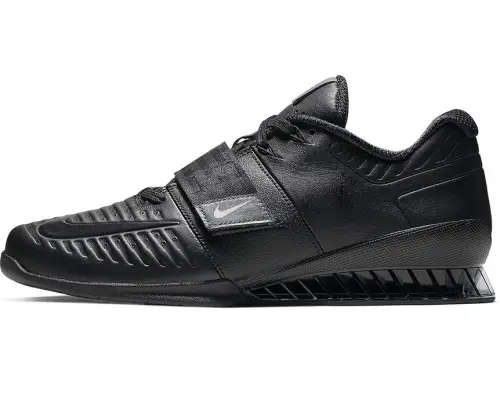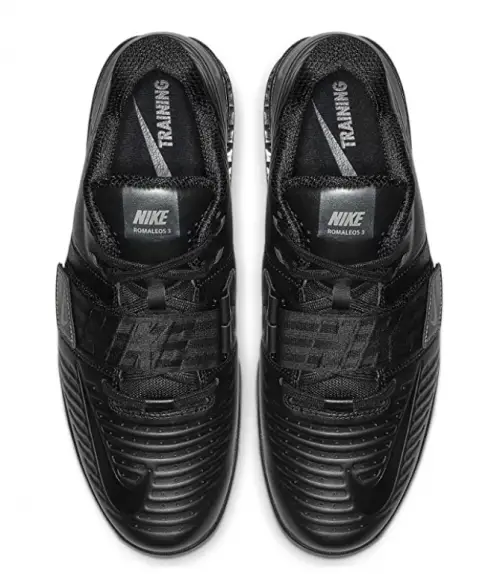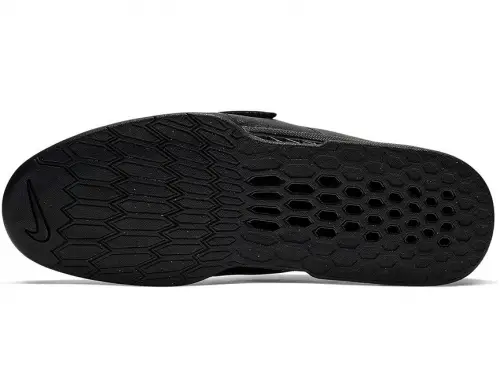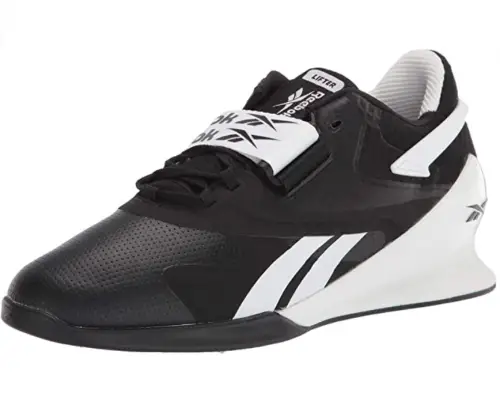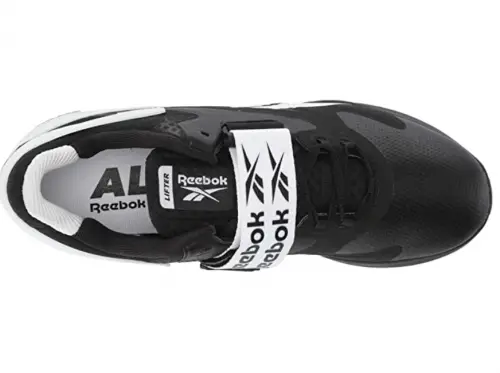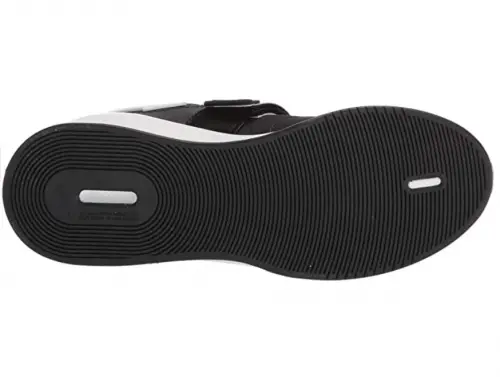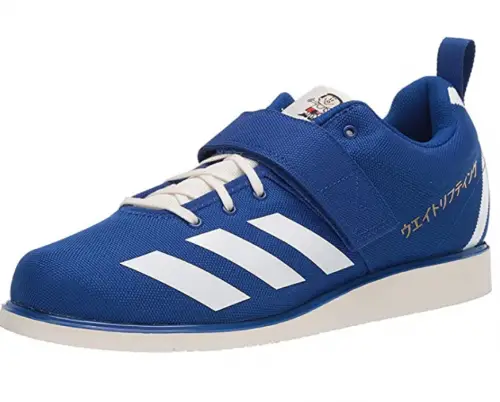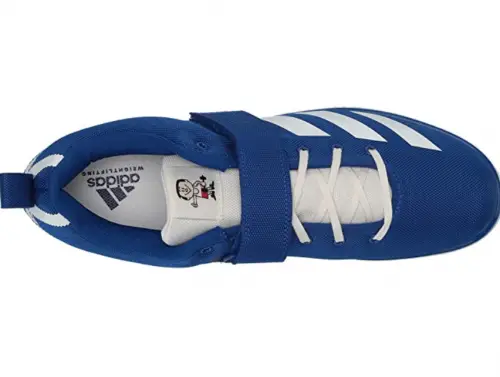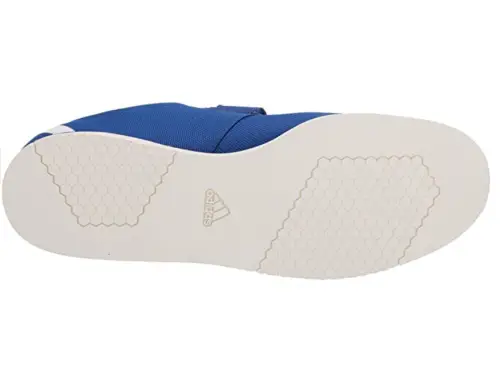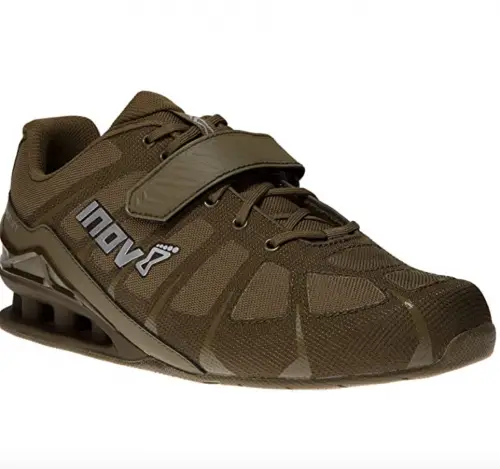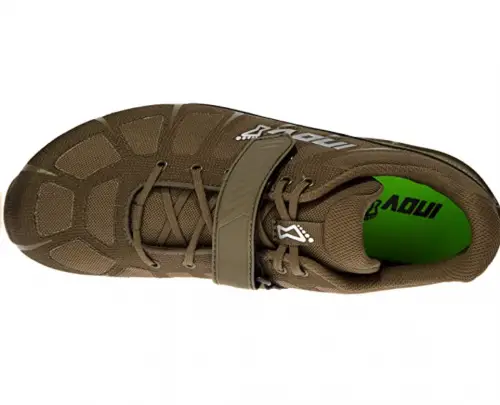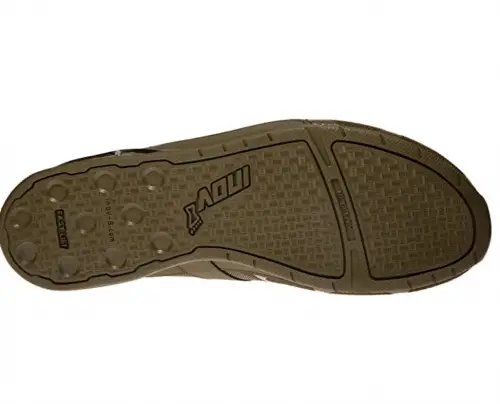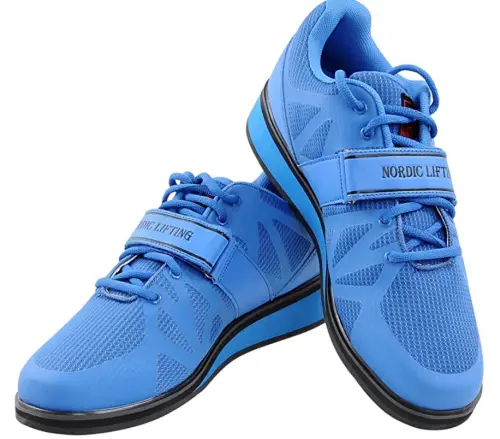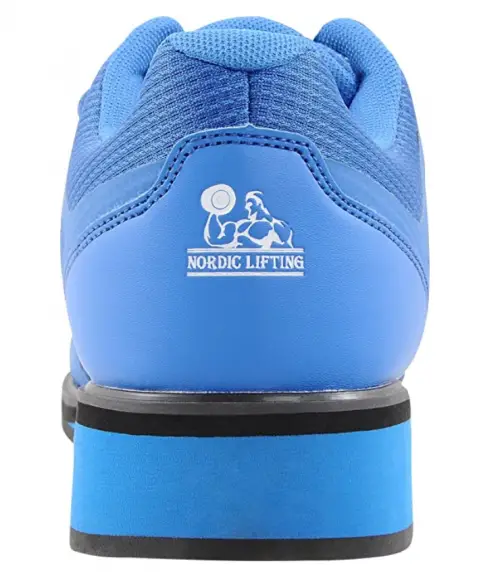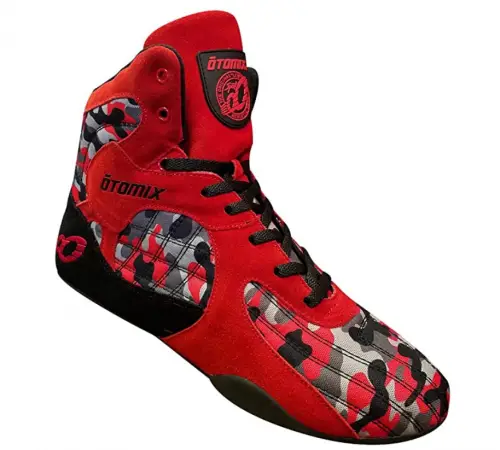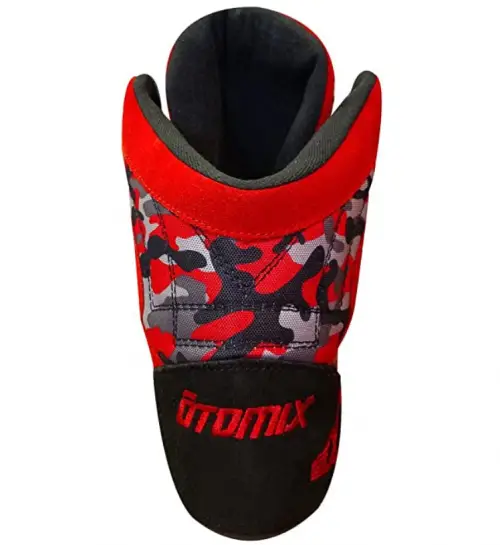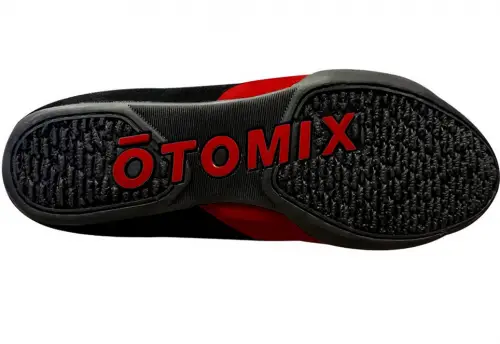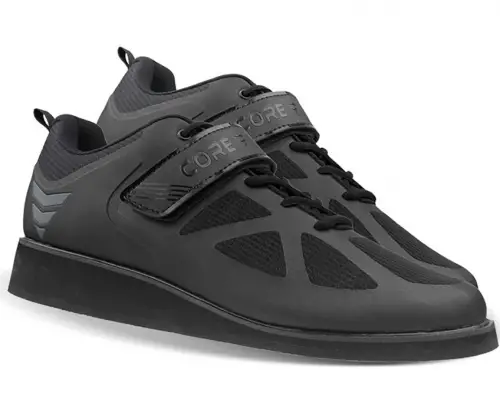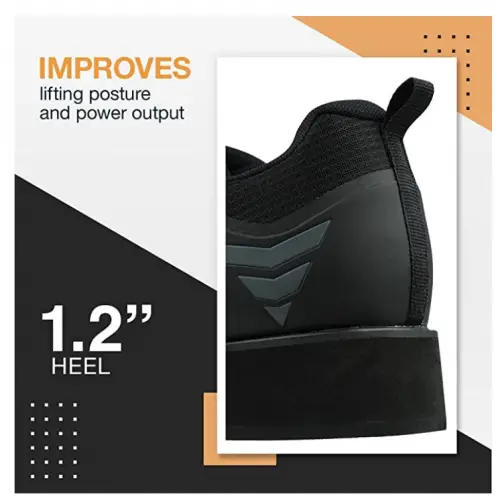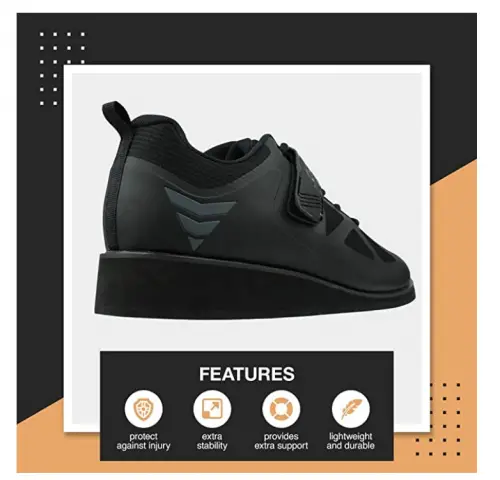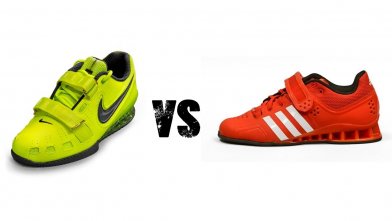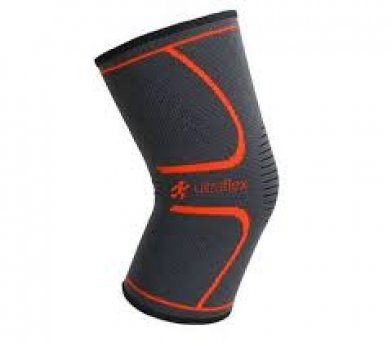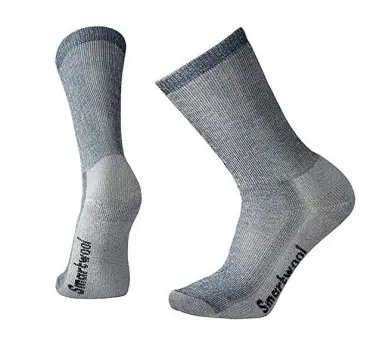Best Weightlifting Shoes for Flat Feet
Power should always be driven from your forefoot and heels, not your arches! If you have flat feet, you may be surprised by the difference a pair of weightlifting shoes for flat feet can make. By properly supporting your arches, you can effectively dig into your lifts through your toes box and heels, and potentially lift more than you ever thought possible.
The designs that we selected for our list provide you with just enough support in your arches while maintaining contact with the ground and ample support at the top of your feet and in your ankles as well.
In this guide, we have gathered some of the best weightlifting shoes for flat feet to help you generate power without putting additional strain on those arches.
This is the best product on our list that is currently in stock:

Low cut collar and profile
Flexible
Lghtweight
Can wear outside the gym
Mesh uppers, including the tongue
10 Best Weightlifting Shoes for Flat Feet
1. Adidas Power Perfect 3
Lateral strap
Derby construction for stability
Midsole wedge
Extra support in heel
May need to go up or down half a size for best fit
These shoes are a blend of leather and synthetic materials, with heel lift and height for help with flat arches. Adidas Power Perfect shoes are a strong, stable platform, with a midsole featuring a die-cut wedge and extra heel support. There is a strap on the instep, making the shoes more stable so you can do your heaviest Olympic or other routines in safety and confidence.
Read moreAdidas used their durable Adiwear on the outsole, along with a synthetic upper and mesh in the front foot area to let you move freely.
The heel has extra support padding. The strap uses hooks and loops for closure. Reviewers were quite positive, stating the shoe is breathable and provides comfort. The shoes use what is called derby construction. This means the material is in quarters. The eyelets for the laces are centered right in the center of the foot. The traditional design, also used in dress shoes, gives you a lot of lateral stability.
Air mesh in the collar adds to how breathable this shoe is. You have three color options. These are lifting-specific shoes, not suited to other forms of exercise or for wearing outside the gym.
2. Nike Metcon Sport
Great arch support
Padded heel collar
Lightweight
Versatile
Runs very narrow
Head to any powerlifting gym, and you are bound to see a lot of Converse All-Stars. While these shoes are ideal for lifts, they aren’t great if you have low arches. That’s where the Metcon Sport comes in! This design boasts all of the versatile features of a Chuck Taylor, but it also hosts a good deal of arch support to keep your feet engaged and protected throughout those difficult lifts. We also love that these shoes transition easily into circuit training and even some cardio work as well!
Read moreThe most notable feature of the Metcon Sport lies in the midsole. While this shoe boasts an effective zero drop and heel cup, it provides a good deal of arch support that our fellow flat-footed powerlifters really appreciate. It contours to the shape of your foot for unmatched stability as well.
The upper of this design is lightweight and provides a good deal of stretch, much like a pair of Converse All-Stars. A midfoot velcro strap locks your feet in place at the arches for another layer of stability and support where flat arches need it most. Plus, the heel collar is slightly padded for extra ankle support as well.
Many lifters overlook the benefits of the Metcon because they don’t host that classic powerlifting design. However, we feel that the simple design of this trainer with the additional arch support and supportive features makes this shoe not only great for powerlifting but various other workouts as well.
3. Reebok PR II
Low cut collar and profile
Flexible
Lghtweight
Can wear outside the gym
Mesh uppers, including the tongue
Does not have the wedge heel insert
These are good all around shoes that will keep you stable during lifting, while also suitable for cross training activities. The uppers are mesh, letting air circulate so your feet stay cool and sweat is kept at a minimum. Your feet will stay comfortable and secure while you do your routine. The tongue, too, is mesh, making it strong, lightweight, and easy on the tops of your feet.
Read moreThe toe of the shoe is leather-not synthetic, but full grain. It adds extra protection to your toe area, and also allows movement and adds durability.
The back opening, where your foot goes in, is cut low so you are able to move freely during wear. The shoes are stable and stiff enough to give you a lifting platform but offer enough flexibility for cross training.
You also get an inner lining that guards against friction. Your feet will not chafe, redden, or become irritated when you wear these cross training shoes.
4. Nike Romaleos 3 XD
Excellent lockdown
Great heel support
Flexible leather upper
Not very breathable
Expensive
What we love most about the Romaleos 3 XD is that it is composed of strong materials that provide great stability and a good deal of flex as well. It provides users with a good deal of heel lift and stability, as well as midfoot support as well when engaging in heavy lifts. Users also love the super-grippy rubber outsole that really plants your feet in place.
Read moreThe very first thing that we noticed about this updated version of the Nike Romaleos is that the upper is composed of strong and sturdy leather materials. The upper doesn’t have a lot of extra bulk or cushioning, which means that it really contours to the shape of your foot. The midfoot strap works to stabilize your arches and give excellent lockdown.
The heel provides users with a slight lift to really help you generate a lot of power. The construction of the midsole is stiff and allows users to generate a lot of power, yet it is still fairly flexible for a wide variety of lifts. The grippy rubber outsole sticks to the ground for a secure base that allows you to push yourself to your limits.
In addition to all of the supportive features found in this design, we also love the overall styling of this shoe. In true Nike form, it is composed of supportive and innovative materials that support your foot while offering a sleek and modern style. It may cost a little bit more than some of the others that we have seen, but we feel that it is worth every penny!
5. Reebok Legacy Lifter
Firm outsole, but flexible
Heel lift for squats
Flex grooves let your feet move comfortably
Extra cushioning, two straps
Cannot be used outside of lifting
This Reebok option is of synthetic construction, with textile to aid in flexibility. The result is a highly durable shoe that will stick with you and keep your feet locked down through any workout. The hard rubber sole is thin enough to function as a lifting shoe, with extra heel and ankle support. There are two straps, along with extra lateral support from wings that hold the eyelets and laces in place. The outsole is tough, but will not mark floors.
Read moreThe shoe is especially suited for doing squats. That is because of the lifted heel. A technology called flex grooves in the front of the shoe allows your feet to move as they would in less substantial shoes. The flex grooves, common in running shoes, are the horizontal scorings you see running across the outsole at the very front of the shoe.
These are only for lifting. Though they let you move, they are much too stiff for cardio or other pursuits.
The heel lift is standard 3/4 of an inch. Reviewers noted the shoes have great support in the arch. They are firm but will go easy on your feet, not causing pain or constriction.
6. Adidas Powerlift 4
Good for lifters of all experience levels
Insole can come out
Fit is tight, but not squeezing
Tight uppers
Shoes run a bit small, be careful
The Powerlift is another shoe offering an extra wide footbed and plenty of motion control to help you lift safely. Construction is all synthetic leather. You get a midsole wedge, die-cut like other quality shoes, to keep you from coming off the ground. This helps you drive your toes and front feet down into the floor for extra power.
Read moreThe fit is snug with a single strap in the middle of your foot. The shoes are unisex and come in several colors. Reviews are largely positive. These shoes are good for lifting, extra heavy or otherwise.
They are best suited to lifting and should not be worn for CrossFit or other activities where you have to move quickly.
7. Inov-8 Fastlift 360
Breathable canvas upper
Lightweight heel lift
Excellent lockdown
Grippy rubber outsole
Expensive
Uncomfortable for some
There have been some pretty big improvements in the design from the Fastlift 360 from Inov-8. This design provides excellent support in the elevated heel and is composed of lightweight and breathable materials that are comfortable to wear on those long and intense training days. This style may cost a little bit more than most, but the extended durability and supportive fit make it an excellent value.
Read moreIt boasts an elevated heel that is composed of lightweight materials with a unique structure that really cuts down on the overall weight of this trainer. The slight elevation in the heel cup provides extra stability and works to take the pressure off of your arches and forefoot to generate more power pain-free.
We also love the construction of the upper of this design. It is composed of a breathable canvas material (much like the classic Chuck Taylors) that provides a good deal of movement and flexibility while working to lift hot air up and away from the foot. The additional midfoot strap also promotes excellent lockdown and support.
If you are in the market for something that is strong and supportive with a raised heel, this design from Inov-8 is an excellent choice. We love that it has higher flexibility than previous iterations of the Fastlift, and boasts supportive features that won’t weigh your foot down too much.
8. Nordic Lifting
Improves your posture
Keeps knees/ankles from rolling
Company is hyper-focused on shoes
May be tough for wider feet
These shoes are made for squatting. They feature a low key, almost simple design, with plenty of features to stabilize you throughout every rep. Nordic Lifting focuses exclusively on lifting equipment. The company offers wrist and ankle straps, compression gear, and a few other shoes in their catalog.
Read moreStitching is reinforced, so these shoes will never come apart at the seams even when you throw your worst at them. The shoes have a strap and Olympic height heel lift, as you would expect, for extra squat assistance.
Although great for Olympic squat artists, the Nordic Lifting shoe can help anyone who regularly lifts free weights or machine weight stacks. The soles have nonslip properties, keeping you ultra stable, and the shoes hold tight to your feet to keep them from moving while they act as your lifting platform.
Because they correct your posture, and because of the lifted heel, shoes like these can actually let you lift more weight. It isn't anything magical in the shoes; they are just designed to make you as efficient as possible. Nordic Lifting makes a product you can rely on, one that will reward you with consistent use.
9. Otomix Stingray
Excellent ankle support
Good sole traction
Flat sole, so you lift the weight and get all the benefit
Lightweight
Suede may be hard to keep clean
The Stingray is a high top lifting shoe made for lifting as well as MMA and wrestling. The ankle support is second to none. The material is suede, which is not as breathable as most mesh or synthetics. Otomix did provide vent holes. The shoe is exceptionally light and allows for your entire range of motion.
Read moreThe sole is extra grippy, with good traction. It's what quality wrestlers need on the mat, and it will benefit you during lifting by stabilizing you and helping you improve posture.
The soles are flat like most lifters expect from their shoes. It lets you use your feet and toes, not any padding, to push down into the floor during the active part of a squat or deadlift. This means you are doing all the work and will get your maximum strength benefits in every workout.
Otomix attaches its soles with both glue and stitching. They will keep the shoe's whole, and keep you protected, for a long time if you use the shoes consistently. You may have to work at keeping the suede clean, but the Stingray will never let you down.
10. Core
A very high heel wedge
Affordable
Flexible upper
Limited durability
We know that the price of many of the designs on our list seems a little daunting, which is why we made sure to include something that is slightly more affordable. This design from Core provides lifters with all of the supportive features that help to cradle your heel and provide support to your arches with a price tag that won’t break the bank.
Read moreWhat makes this style from Core unique is that the heel is a little higher than some of the other designs that we have seen. The heel platform of this design measures to be an impressive 1.2 inches high, which really helps take the pressure off of your arches while driving power up through your heels.
We also love the simple design of the upper. It is composed of a blend of mesh with synthetic overlays to provide a good deal of stability while working to lift hot air and moisture up and away from your foot. It also boasts a velcro strap along the midfoot for excellent stability and lockdown as you push into your lifts.
If you are in the market for something that is a little more affordable, this design from Core is a great choice. It is important to note, however, that this option isn’t quite as durable as some of the more pricey options we have seen. However, if you want to give these styles of shoes a try, this is a great option that won’t break the bank!
Criteria Used for Evaluation

Application
A lifting shoe should set you up for safe and effective lifting.
In this review, the lifting shoes should also provide extra arch support. We specifically looked for those that do. Arch support can come in the form of padding, inserts, or even the wedge-shaped heel inside the shoe that you often find on squat shoes.
Since we were looking for lifting shoes for flat feet, we did not include many that don't have the wedge. The ones we did include are lower in the list.
We noticed these shoes also tend to be trainers, or cross trainers, good for other activities besides lifting. We provided them because we know many of our readers will want to cross train in their lifting shoes.

Breathability
If your feet sweat enough to make the shoe smell, bacteria can grow.
We do not want any of our readers to have that problem. So we made sure the shoes on our list will all allow airflow. Many of them have mesh uppers or quarter panels for this reason. We think synthetic materials have leather beat as far as breathability.
This is why lifting shoes are rarely made completely of natural leather. The leather has good freedom of movement, and it is durable, but by itself, the leather cannot breathe to the level you need for cleanliness. Often, leather or partial leather lifting shoes will use synthetic leather, because it is more porous.

Comfort
If the shoe fits, you will wear it and get the benefits.
You could probably lift in a pair of boots. This was popular at one time in the powerlifting community, and in some gyms you still see people working out in boots. It is frowned upon at most gyms though, because the boots are loud and can leave marks on the floor.
We caution against using boots too, but for different reasons. Mainly, the boots are not designed for comfort during heavy lifting. Work boots are not made to help you beat your PR on the squat or deadlift.
All the shoes we have reviewed here have superior comfort and will keep your feet feeling protected over time.

Durability
Leather was once the preferred material for many kinds of footwear.
But in modern times, sporting footwear is rarely made completely of leather. It is heavy, expensive, and not very breathable, as we mentioned. Most makers have switched to synthetic materials, or a synthetic and textile blend. The synthetic materials are made by combining other fabrics strengthening polymers in a lab. This makes for a long lasting shoe that gives a good performance.
We are confident that every shoe on this list will give you long-lasting performance and will still be strong after periods of long use.

Motion Control
A lifting shoe's number one job is to lock your foot down.
The feet are the foundation of any Olympic weightlifting move, and this is also true for things like standing rows or standing barbell curls. If your feet move the wrong way, you can pull a tendon or lose control of the weight.
While the shoe is keeping your foot as still as possible, it also has to keep you comfortable. Uncomfortable shoes do not lead to good results. So the lifting shoes for flat feet we prioritized are ones that keep your feet still, giving you stability, while also being flexible enough for freedom of movement.
Expert Interviews & Opinions
Not everyone needs to put forth the expense of getting a pair of shoes that they will only use for lifting weight at the gym.
This is especially true of beginners. If you join a gym, take up a sport, or just decide to be more active after a period of being sedentary, the most important thing you can do is show up. Make a routine and stick to it daily. Your favored activities may not include weightlifting, and that's okay. You can do a lot with the weight stack machines and body weight exercises.
If you do decide to lift, it is wise to learn the proper forms, techniques, muscle groups and different exercises. Once you know what to target and how, and once you are able to get through a few weeks of a lifting regimen without injury or layups, you may be ready for your first pair of lifting shoes. We suggest not going out and spending the money if you either aren't going to use them or don't have the knowledge base to use them effectively.
The main point of difference, what makes a lifting shoe a lifting shoe, is the lifted heel. You can see these on the back of a lifting shoe. Some of them resemble the honeycomb or waffle sole plates on a pair of Nike Shox, but the ones on lifting shoes will be a lot more pronounced. The raised heel, in fact, can feel unnatural for walking and standing when you try on your first pair.
What the heel does is to give your ankle an enhanced range of motion. That is important because if you can stretch that Achilles, you can go deeper into your squat. This will lead to greater strength and flexibility and, over time, less likelihood of injury.
The other thing setting lifting shoes apart from regular gym shoes is the flat sole. The flat sole, which comes into more contact with the ground, gives you a stronger foundation and a platform with more surface area. This feature can actually help you lift a bit more weight.
Other Factors to Consider

Upper
The outsole is the part of a shoe that comes into contact with the ground. On lifting shoes, these are almost always made of hard rubber, perhaps with a plastic heel lift cup in the back. Everything above the outsole is called the upper of the shoe.
Materials and design of the uppers are important factors in the effectiveness of any lifting shoe. The material determines breathability, flexibility, stain fighting properties, and even how durable the shoe is. The design of an upper is important because it impacts stability.

Weight
Weightlifting shoes don't have to be heavy to help you lift heavyweight. In fact, shoes made from heavier materials can cause leg fatigue and make you want to finish your routine early. Heavier materials, also, will not be as breathable and can cause moisture problems inside the shoe.
In picking and studying shoes for our guide, we looked for those that are lightweight enough to allow you movement. Lifting shoes are not as light as running shoes, but wearing them should not feel like you are in a pair of combat boots, either.
Frequently Asked Questions
q: Why wear weightlifting shoes?
Some powerlifters may tell you the best shoes are no shoes at all. And while that may work for them, it may not be ideal for everyone. A good pair of weightlifting shoes not only supports your feet and ankles (which can cut down on injuries), but they can also help shift the weight so you can engage in a lift with the proper form.
A shoe with a slight lift in the heel and a stable ankle is a great option for squats, for example. A stable ankle prevents your ankles from bending inwards, and a slight lift in the heel naturally pivots your hips forward for a more stable form that reduces the risk of dumping all of the weight on your lower back.
We suggest trying both ways to find what works best for you! If you feel that lifting in your tube socks feels more natural and easy, go barefoot! At the end of the day, the gear you wear depends upon what works best for your frame.
q: Is there a difference between a squat shoe and a lifting shoe?
There really is, even though the terms get thrown around and are used interchangeably. A squat shoe, by definition, must have heel lift and a wedge-shaped insert for the arch. These are the mechanical tools that give you an advantage in doing squats, because of the increased ankle flexion.
Lifting shoes are those with flat soles, ankle straps, padding, and good traction, but that may or may not have the raised heel or the insert. Often, lifting shoes are preferred because you can wear them for other activities. Squat shoes are so stiff that they can only be safe or effective while lifting free weights.
q: How should weightlifting shoes fit?
The fit of weightlifting shoes is no different than your favorite pair of running shoes. It is important that they fit snugly on your feet to create a stable base and prevent them from slipping around on your feet as your workout. A loose shoe is a recipe for injuries, so be sure that they fit on your foot like a glove (without cutting off circulation, of course!)
q: How do straps help?
Straps help by giving you a more snug fit. They are one tool, along with the laces or, sometimes, along with a patented closure system. You almost never see a lifting shoe with straps and no laces. That is because the strap alone is not strong enough to keep your foot still by itself. The laces aren't, either, so they are reinforced by the straps unless the manufacturer made other arrangements.
The straps also save you from feeling like you have to pull the laces in so tight that they hurt your feet.
q: Are lifting shoes worth it?
If you have progressed in your training program enough to start questioning whether you need lifting shoes or not, the answer is probably yes. The shoes really will help prevent injury and encourage your body to lift more. With so many on the market, too, you can always find something that will give you what you need without you having to overspend.
q: Will the shoes make me squat more?
They can help you squat more, and the results can be pretty dramatic at first. In addition to the increased ankle motion, a good pair of squat shoes will also drive your heel into the ground, giving you an extra boost and ensuring that all the effort is coming from you, not from the shoes.
The other benefit of squat shoes is that they encourage you to keep your torso and spine straight. This will give you a lifting advantage and will also protect you from serious injury.
q: Is it good to use wrestling shoes for lifting?
Yes, it is, and in fact, Otomix, a brand we feature in our guide, is known for promoting their shoes as both for lifters and for martial artists. Otomix shoes are well known and come from a trusted brand.
Wrestling shoes will specifically help you with deadlifting. That is because of how lightweight and grippy they are. Wrestlers need good traction, more than almost any other athletes do.
Sources
- , The Effects of Weightlifting Shoes on Squat Kinematics, University Study
- , Kinematic Changes Using Weightlifting Shoes on Barbell Back, Journal of Strength and Conditioning Research
- , The History of Weightlifting Shoes, Long Running Educational Blog












